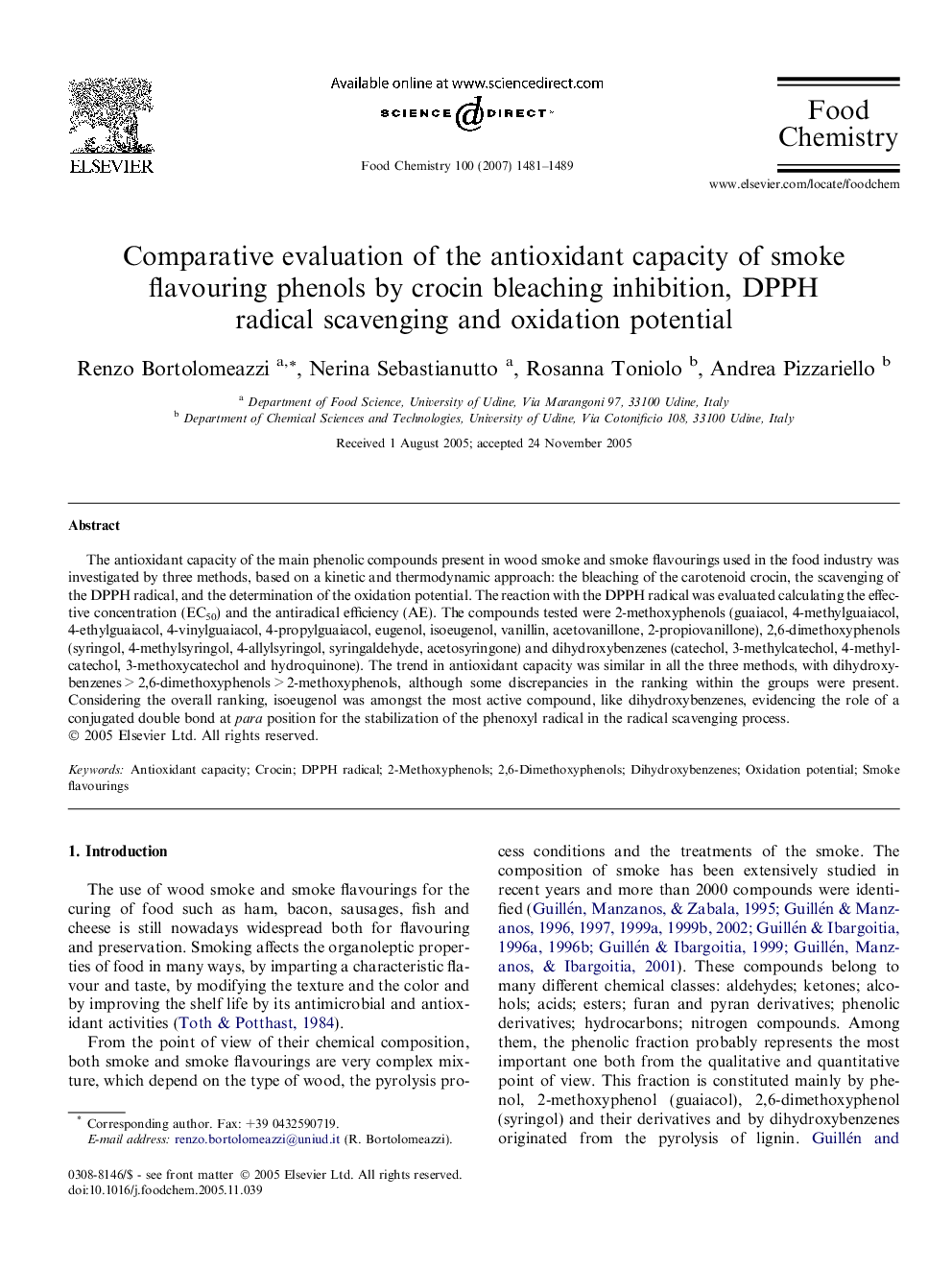| Article ID | Journal | Published Year | Pages | File Type |
|---|---|---|---|---|
| 1190479 | Food Chemistry | 2007 | 9 Pages |
The antioxidant capacity of the main phenolic compounds present in wood smoke and smoke flavourings used in the food industry was investigated by three methods, based on a kinetic and thermodynamic approach: the bleaching of the carotenoid crocin, the scavenging of the DPPH radical, and the determination of the oxidation potential. The reaction with the DPPH radical was evaluated calculating the effective concentration (EC50) and the antiradical efficiency (AE). The compounds tested were 2-methoxyphenols (guaiacol, 4-methylguaiacol, 4-ethylguaiacol, 4-vinylguaiacol, 4-propylguaiacol, eugenol, isoeugenol, vanillin, acetovanillone, 2-propiovanillone), 2,6-dimethoxyphenols (syringol, 4-methylsyringol, 4-allylsyringol, syringaldehyde, acetosyringone) and dihydroxybenzenes (catechol, 3-methylcatechol, 4-methylcatechol, 3-methoxycatechol and hydroquinone). The trend in antioxidant capacity was similar in all the three methods, with dihydroxybenzenes > 2,6-dimethoxyphenols > 2-methoxyphenols, although some discrepancies in the ranking within the groups were present. Considering the overall ranking, isoeugenol was amongst the most active compound, like dihydroxybenzenes, evidencing the role of a conjugated double bond at para position for the stabilization of the phenoxyl radical in the radical scavenging process.
